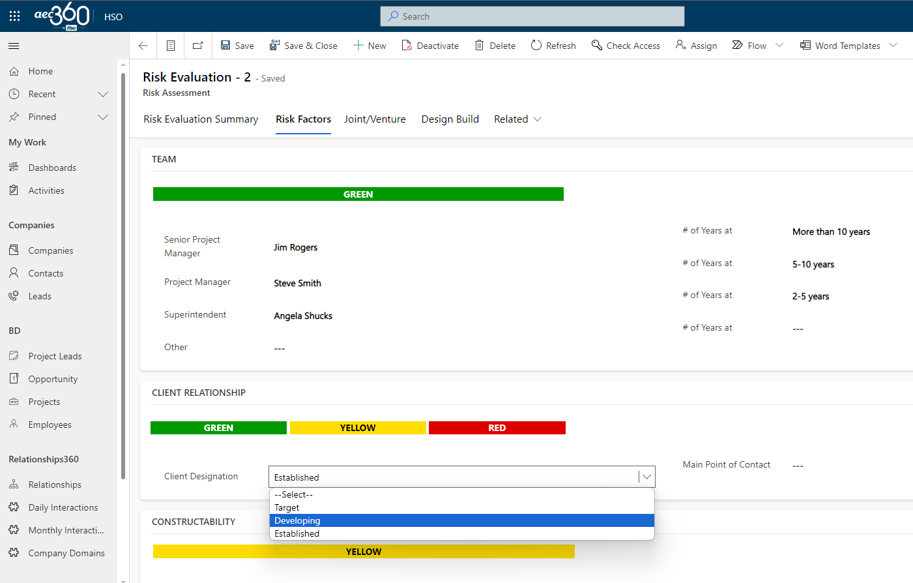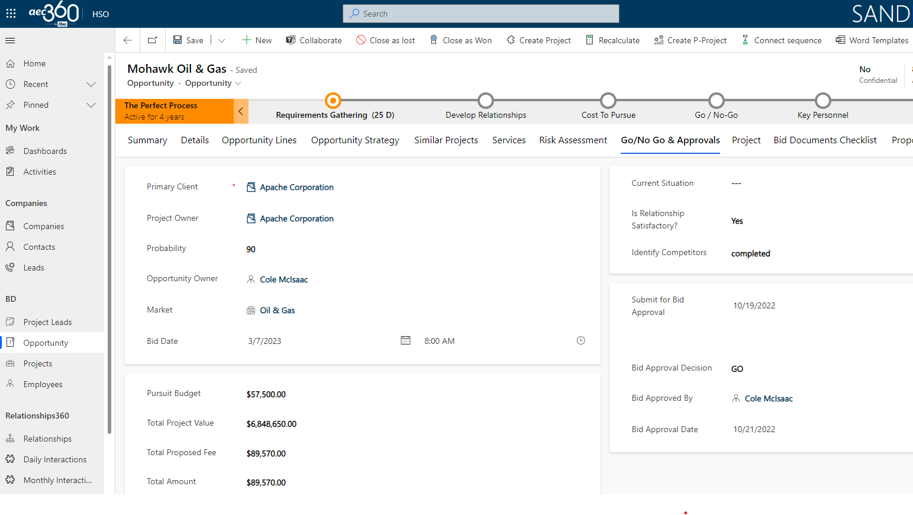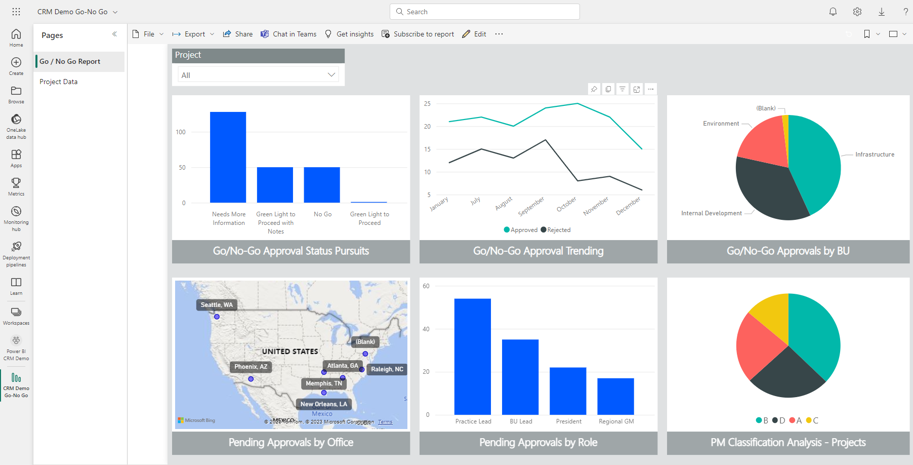For an AEC firm, deciding whether or not to pursue an opportunity is a strategic decision that firms have to live with, from weeks that it takes to prepare the proposal to months that it may take to deliver the project. Pursuit investments can easily run into tens of thousands of dollars or more. Complex pursuits require significant time investment from some of your most important subject matter experts. And marketing departments can easily become overwhelmed responding to proposals that may not be the best fit for your firm. All of these factors make it critical that firms select the right projects to pursue early within the opportunity lifecycle. The aec360 CRM solution can help.
The importance of digitizing your go/no-go process
For many firms, the go/no-go process is highly manual and consists of forms and documents that are filled out, emailed around, and stored outside the context of their business data. This requires significant data entry and coordination and limits the ability to report on prior go/no-go decisions and project outcomes to better inform future pursuit decisions. Therefore, it’s important to digitize and capture the go/no-go process in a software tool in order to maximize efficiencies and leverage this data in the future.
Getting started with go/no-go automation – establishing your criteria
The first steps in automating your go/no-go process should be to establish key criteria for making go or no-go decisions as well as identifying potential risks with the project. This can include attributes such as:
- Does this opportunity fit within our overall marketing strategy?
- Do we have demonstrated experience needed to be competitive?
- Do we have the staff to take on this project?
- What does our relationship with the client look like?
- What does the timeline look like?
- What is the projected profitability of the project?
- Which competitors are we going up against?
- Is this a one-time job, or is there a potential for future work?

The definition of these attributes should also include decisions around whether the answers to these questions should be subjective (yes, no) or should be scored based on the strength of the answers in order to produce a numerical value for the decision, which is discussed further below.
Defining the process
Once you’ve defined the key go/no-go decision criteria, it’s necessary to decide what success will look like for each type of project opportunity, who should be contributing to or making the final decision, and which workflows or approvals should be in place.
Establishing workflows for various pursuit scenarios can allow you to correlate the amount of time and resources with the size, complexity, and risk of the opportunity. For example, one decision criteria for pursuing a project might be based on the size of the project or the projected revenue. The rule might be configured as follows:
- If the project revenue is under $250,000, the technical lead makes the go/no go call and there’s no need for a further go/no-go decision discussion.
- If it’s between $250,000 and $1,000,000, you need approval from the market sector lead; follow up is an optional discussion
- If it’s between $1,000,000 and $2,000,00, you need approval from the division lead and technical team buy-in
- If it’s over $2,000,000, you need approval from the president and technical team buy-in.
With automation through solutions like aec360, once the opportunity data is entered, the system will automatically request approvals from the appropriate people. It will then report back to the responsible individual to take the next steps.

Scoring your go/no-gos
Determining how to score each go/no-go attribute can help you more objectively see how attractive a particular pursuit might be. For example, implementing a green-yellow-red system can save valuable time by identifying the most apparent Gos (greens) from the No-Gos (reds). The gray, or rather yellow, area in between is where your team can focus their efforts and set up follow-up discussions to make an informed decision.
A more sophisticated approach would be to provide a numerical score next to each of the go/no-go criteria. For example, a 1 through 5 score could rate either the strength or risk associated with each attribute. Your go/no-go criteria can also be weighted based on importance or priority to factor a higher or lower percentage of the total score. In either case, the total go/no-go score for the pursuit can then give you an objective measure on which to weigh your decisions.

Reviewing your go/no-gos
Once all questions and decision criteria have been answered, pursuit teams and decision-makers can go to a single place to see all go/no-go decisions. Rather than sending emails or hosting meetings, every stakeholder can have online access to the results and reports for review and comment, and ultimately a final go/no-go decision. More importantly, this information is stored in a reportable format and preserved for future inquiries should you wonder in the future how you came about making a particular “go” decision.
Managing your go/no-go process in aec360
aec360 was designed specifically for the architecture, engineering, and construction industry and can embed automated go/no-go processes directly into the CRM solution, not as an add-on. aec360 has the flexibility to allow clients to configure the process to match their specific way of doing business, from deciding which projects should go through the process; what questions to ask; whose input is needed; who collects the data; and who makes the final decision.
aec360 also provides dashboards and reports to simplify your approval processes, helping to keep firms focused on their core capabilities, and pursue projects that align with the company’s strategy. Ultimately, the go/no-go decision-making capabilities in aec360 provide the checks and balances to ensure that firms are investing in winnable pursuits that align with the firm’s market strategy, and not wasting time and money on pursuits the firm simply can’t (or shouldn’t) win.

Sample Go/No-Go Form
Use this sample Go/No-Go Firm to kick start making intentional pursuit decisions without your firm

